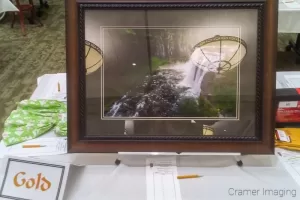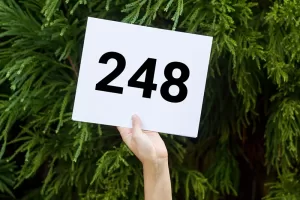How to Bid on Art in an Auction
Shop

Have you ever shopped for art at an art auction? I have. You can find some good stuff there. You can also pay a premium price for it too. If you’re careful, you can successfully acquire art from an art auction at a decent price. Today we’re discussing just how you can do so.
To start off, many tips here will be applicable to bidding in regular auctions as well. However, since art has a much more subjective value, you’ll find these tips especially relevant to your art shopping at an auction. These tips apply to online auctions, silent auctions, and live auctions alike.

Also, we will not be discussing eBay in here because eBay’s model is much more like a flea market or a yard sale than an auction house. They don’t need a catalog as search engines have them covered. People browse. People can make counter offers in some cases. Some points here will apply to eBay but not all so I won’t cover anything specific to eBay.
Check the Catalog
Every auction house, whether in-person or online, will have a catalog. This catalog shows all the lots currently offered, including any and all art. It also contains some information about each lot or each item in the lot as necessary. The auction house should publish this information well ahead of the auction to attract as many interested buyers as possible. You may find this catalog online or in print.

Smaller charity auctions might not offer a catalog as the costs of putting together such a list and then publicizing it would eat into the profits which the charity expects to benefit from. For such smaller auctions, you might just need to show up and browse the lots to see if you are interested.
Larger piece of art, or those created by a well-known or famous artist, will often be part of the big ticket portion of the auction (often the end of the auction). Smaller art pieces, and those by relatively unknown artists, will often be part of the smaller lots offered. These often sell at the beginning and middle of an auction.
Register as a Bidder
If you want to participate in an auction, either in person or online, then you need to register with the organization. You will be assigned an account or a number respectively. Without registering, you will not be allowed to make a valid bid.

The auction officials may ask you to place your card number on file at the time of registration. Be prepared for this with enough funds in the bank or available credit to cover your anticipated purchases.
Know the House Rules
 Most auction rules are straightforward and well known. However, many auction houses have their own specific rules which they operate by. You need to know what these rules are if you intend to bid. Some of these rules involve bidding increments. Other rules may involve what to do if you’re in the middle of writing a new bid when a silent auction ends. Not following these rules could see your bid rejected or even see you kicked out of the auction and your purchases revoked.
Most auction rules are straightforward and well known. However, many auction houses have their own specific rules which they operate by. You need to know what these rules are if you intend to bid. Some of these rules involve bidding increments. Other rules may involve what to do if you’re in the middle of writing a new bid when a silent auction ends. Not following these rules could see your bid rejected or even see you kicked out of the auction and your purchases revoked.
If not listed online, then you should receive a copy of the house rules when you register as a bidder. Take some time before the auction starts to review that document. You should have plenty of time to do so if you’re early enough to an in-person auction.
If you’re participating in an online auction, then the rules of the house should be available somewhere rather prominent on the website. Check the footer if you don’t see it in the header navigation.
Bidding Psychology
Once the auction gets going, things get exciting. The fast-paced feel of an in-person auction can really get the blood pumping. You might find yourself becoming obsessive about checking and rechecking an online auction. You might find it easy to get wrapped up in the competition for and the excitement of winning a lot. That’s what drives prices up high. However, it’s not in your best interests to get caught up like that.

You should analyze your budget before you enter an auction setting so you know how much you can spend in total. With that important overall figure, you break it down and decide how much you want to spend on any one particular lot. Set a maximum price before you drop out. Then stick to that ceiling. If you don’t win a lot you want but something else you want comes up, you may reallocate your maximum on the fly. The one thing you don’t want to do is change your total overall spending cap. If you do, then you might end up with some overpriced art and a bad case of buyer’s remorse.
The Aftermath
 The aftermath of an auction is rather simple. For in-person auctions, you pay for the lots you won and you leave with your stuff. For online auctions, you receive notice that you won and you have a window of time to pay for your winnings or you forfeit them.
The aftermath of an auction is rather simple. For in-person auctions, you pay for the lots you won and you leave with your stuff. For online auctions, you receive notice that you won and you have a window of time to pay for your winnings or you forfeit them.
You may find additional fees attached to your final price tag such as premiums for the auction house or credit card transaction fees. Make sure to pad your budget a little in anticipation of these fees. You will not be able to waive them.
If you’re buying a piece of oversized art, then you may need to arrange for transport or shipping. That is if you aren’t ready to load it up in your current vehicle. Smaller pieces of art should fit easily into your car if you didn’t buy too many lots at the auction.
Conclusion
Getting decently priced art from an auction is as simple as finding what you want, setting a budget, sticking to it, and remaining aloof from the competition over winning a lot. If you manage to do so, then you will acquire art which you will treasure and won’t break the bank at the same time. Happy bidding.
Best Sellers
Cramer Imaging Newsletter

Receive monthly updates in your inbox from us.






